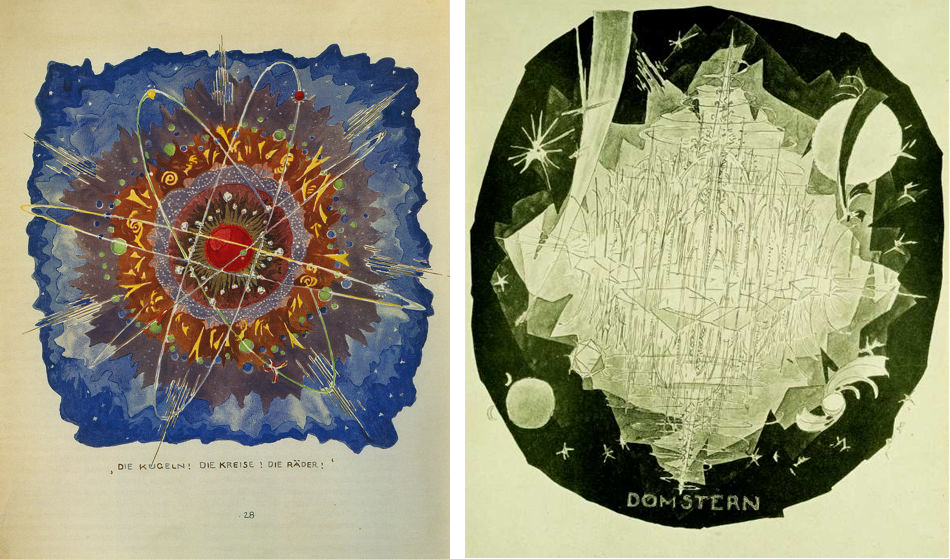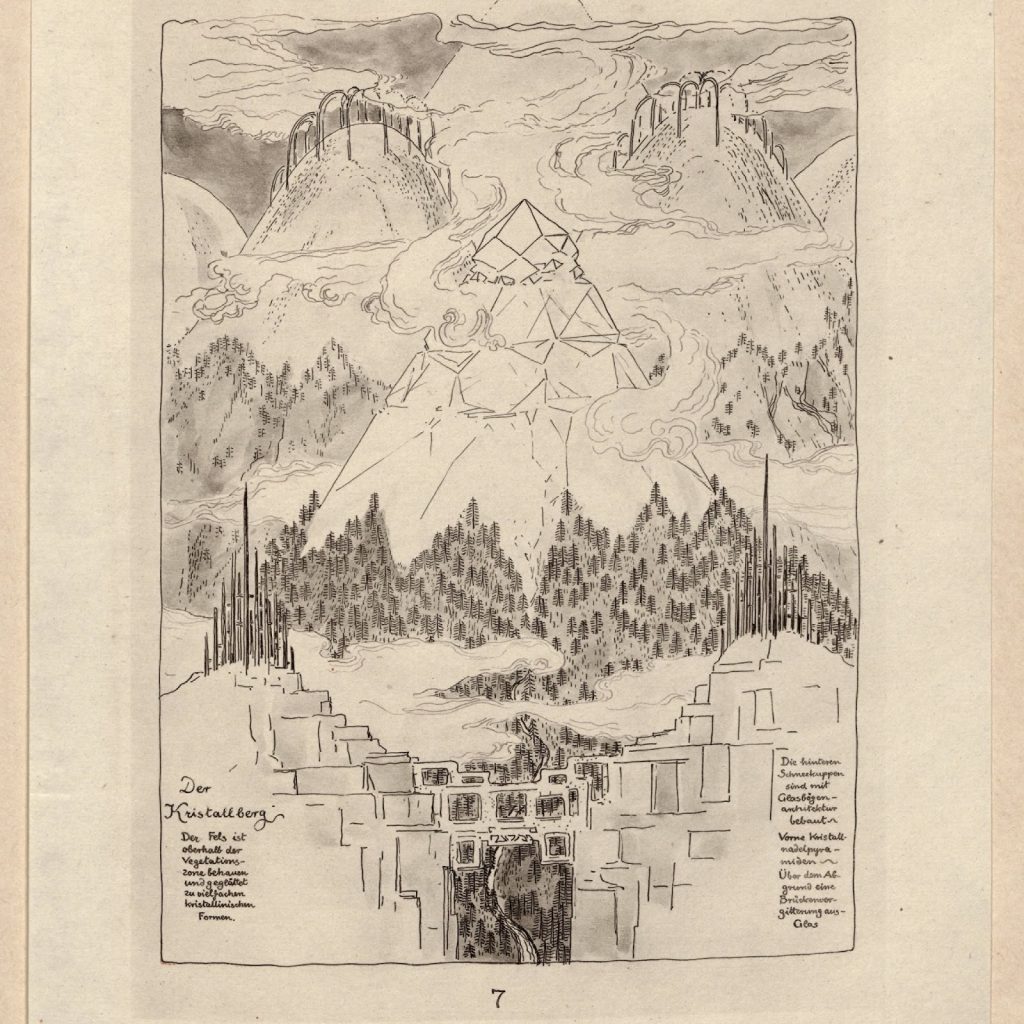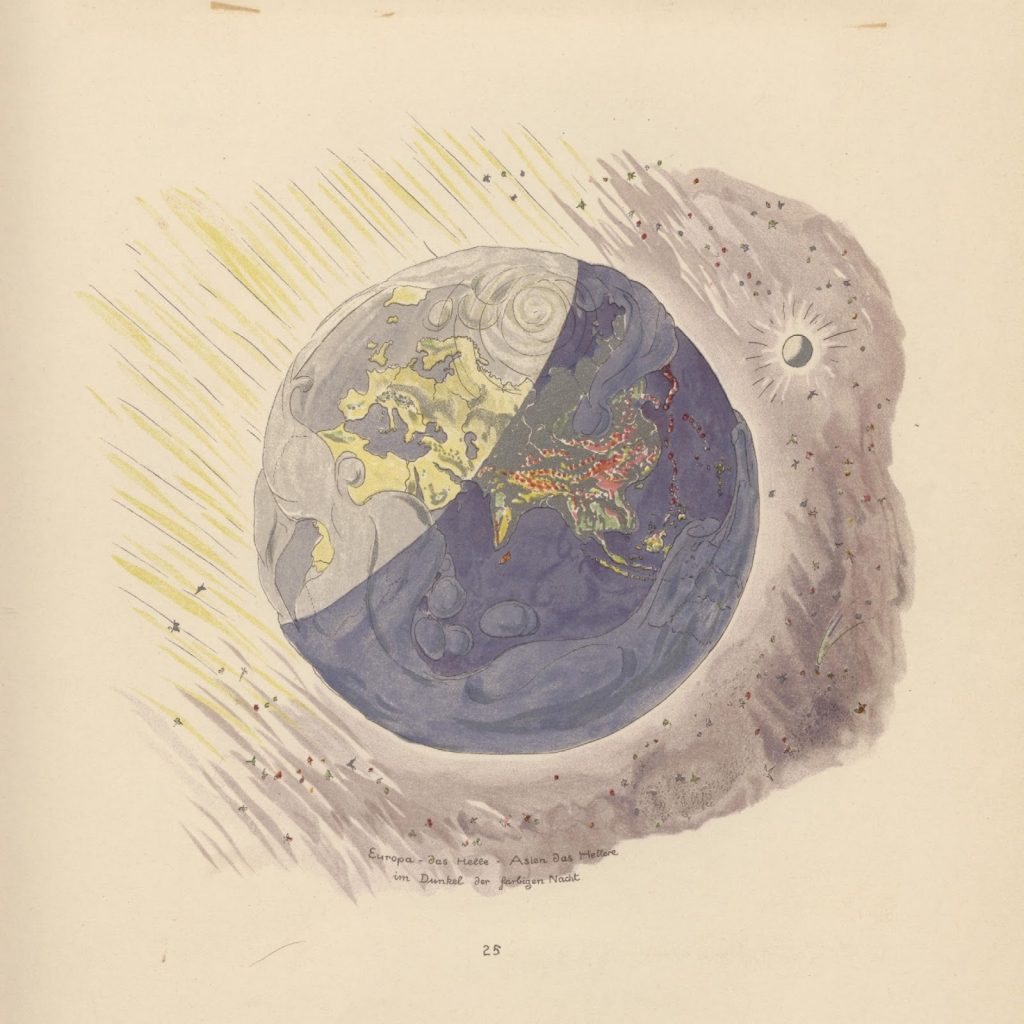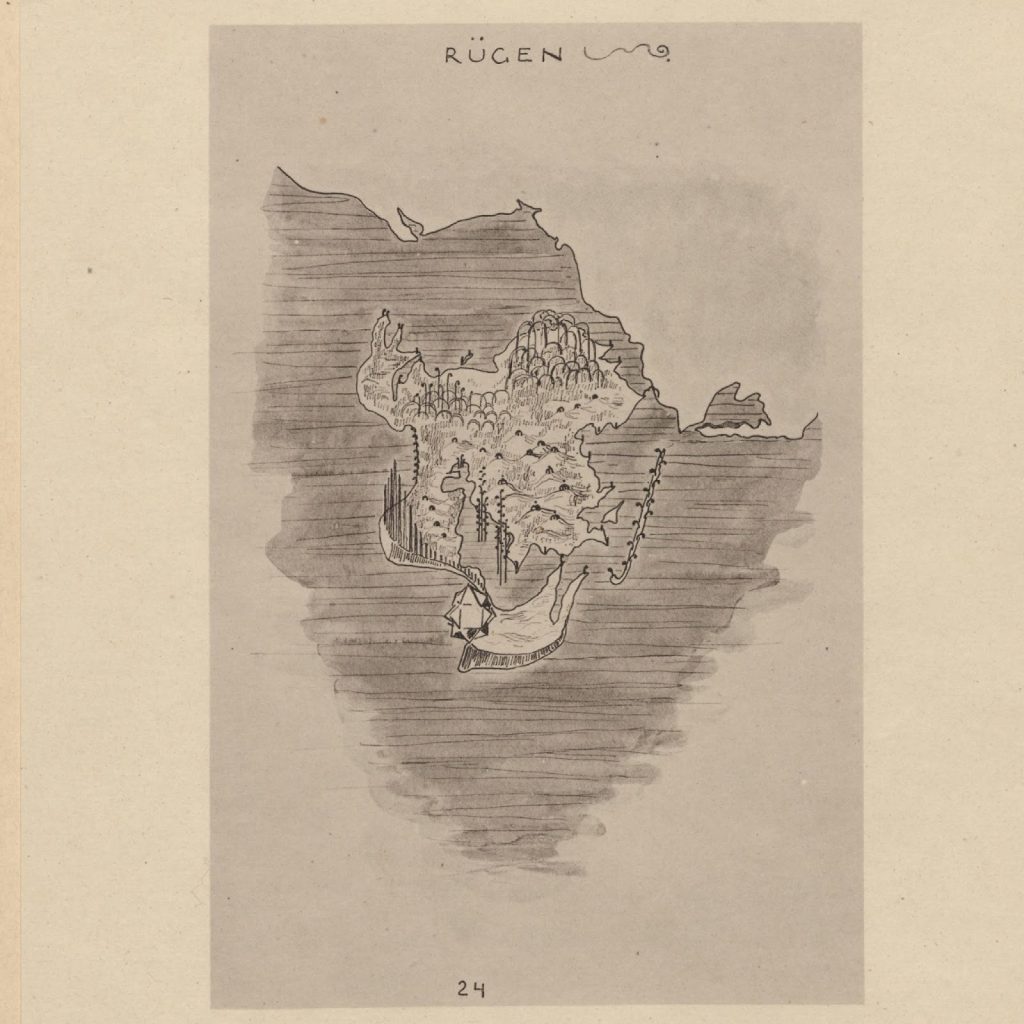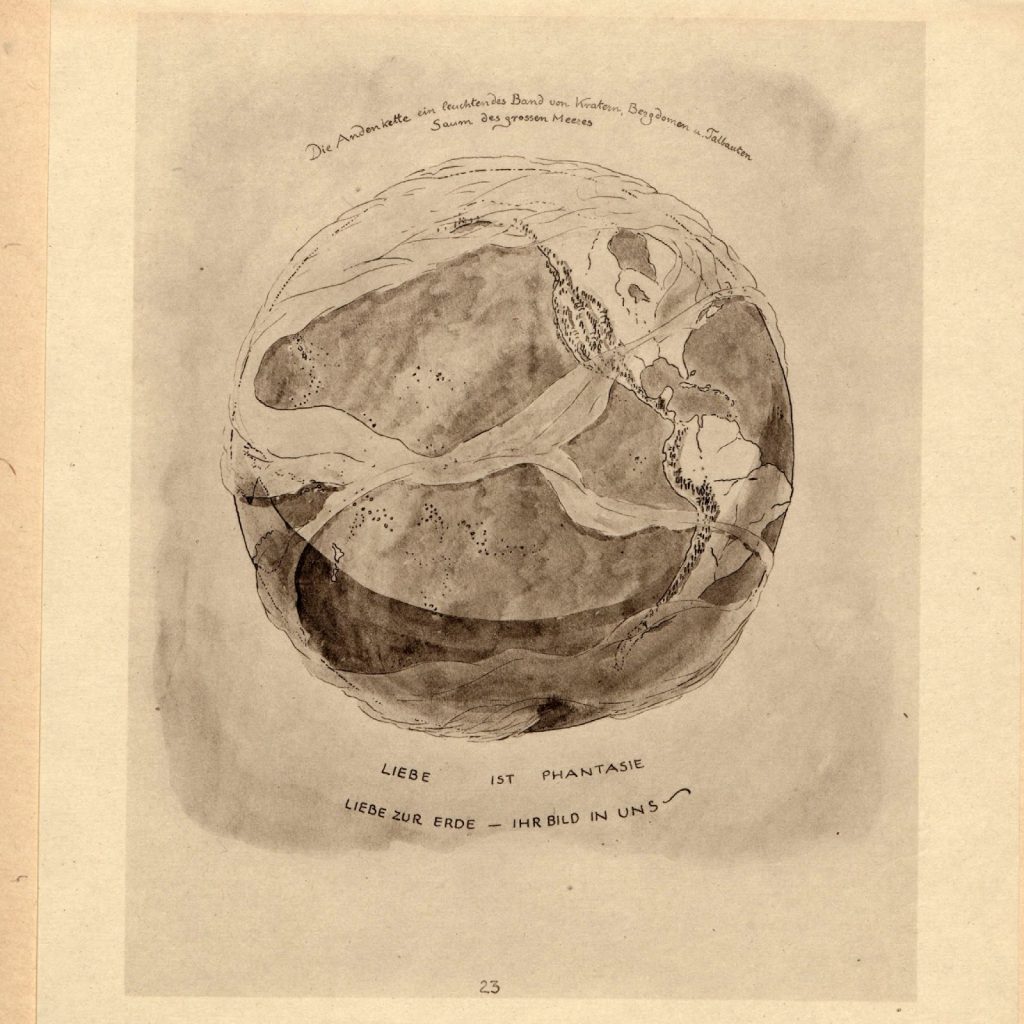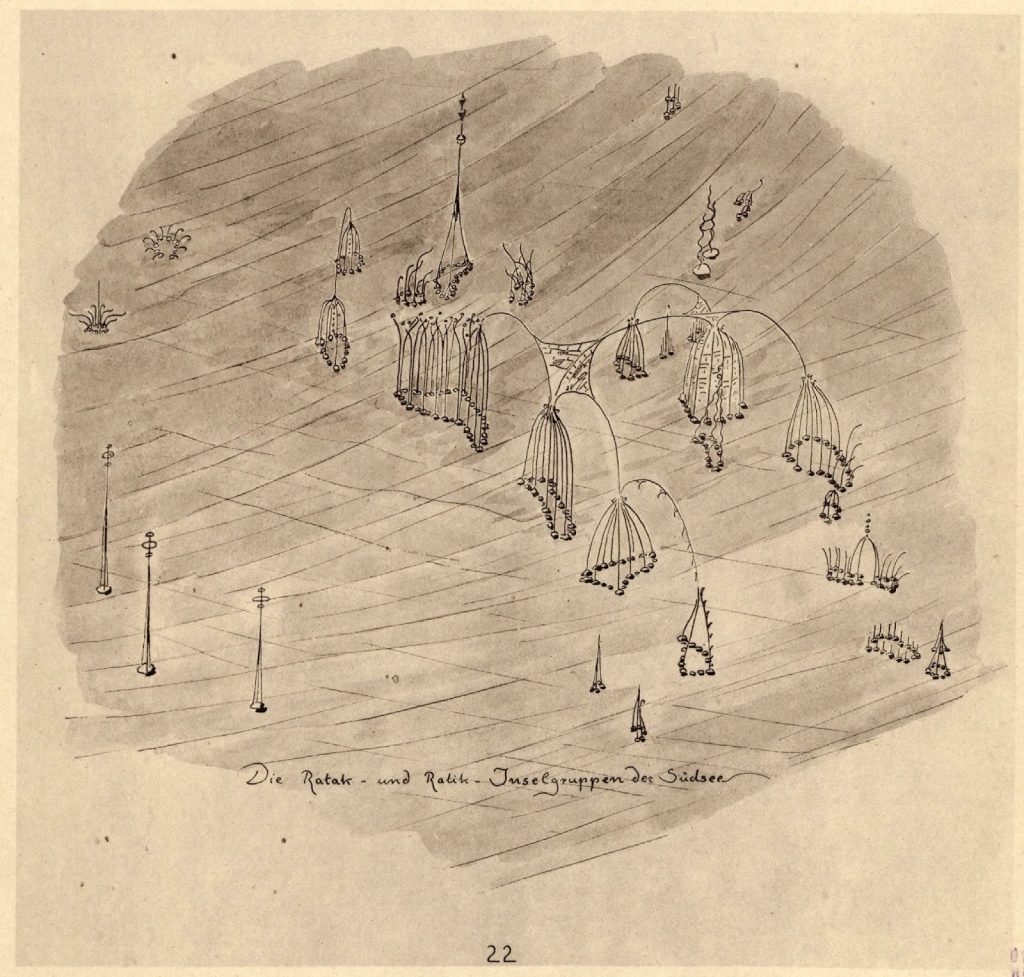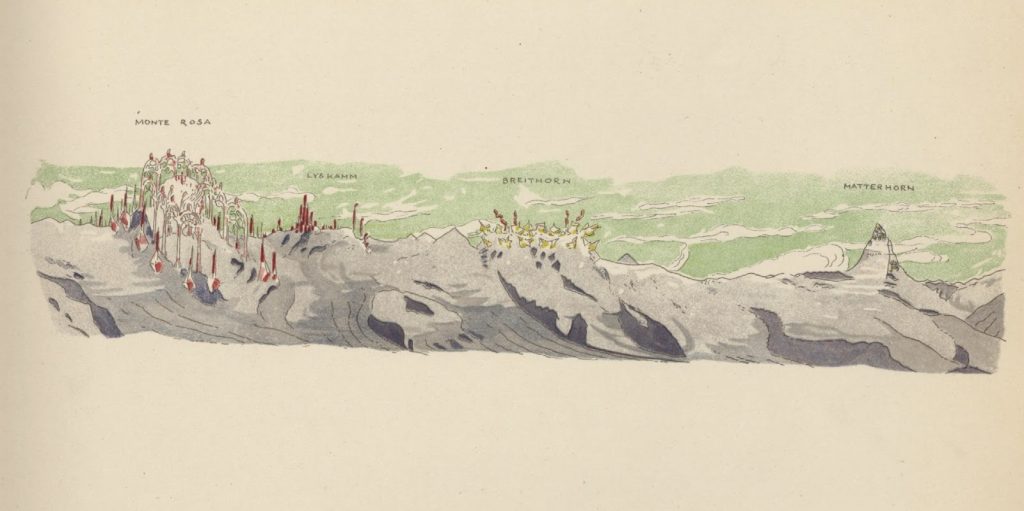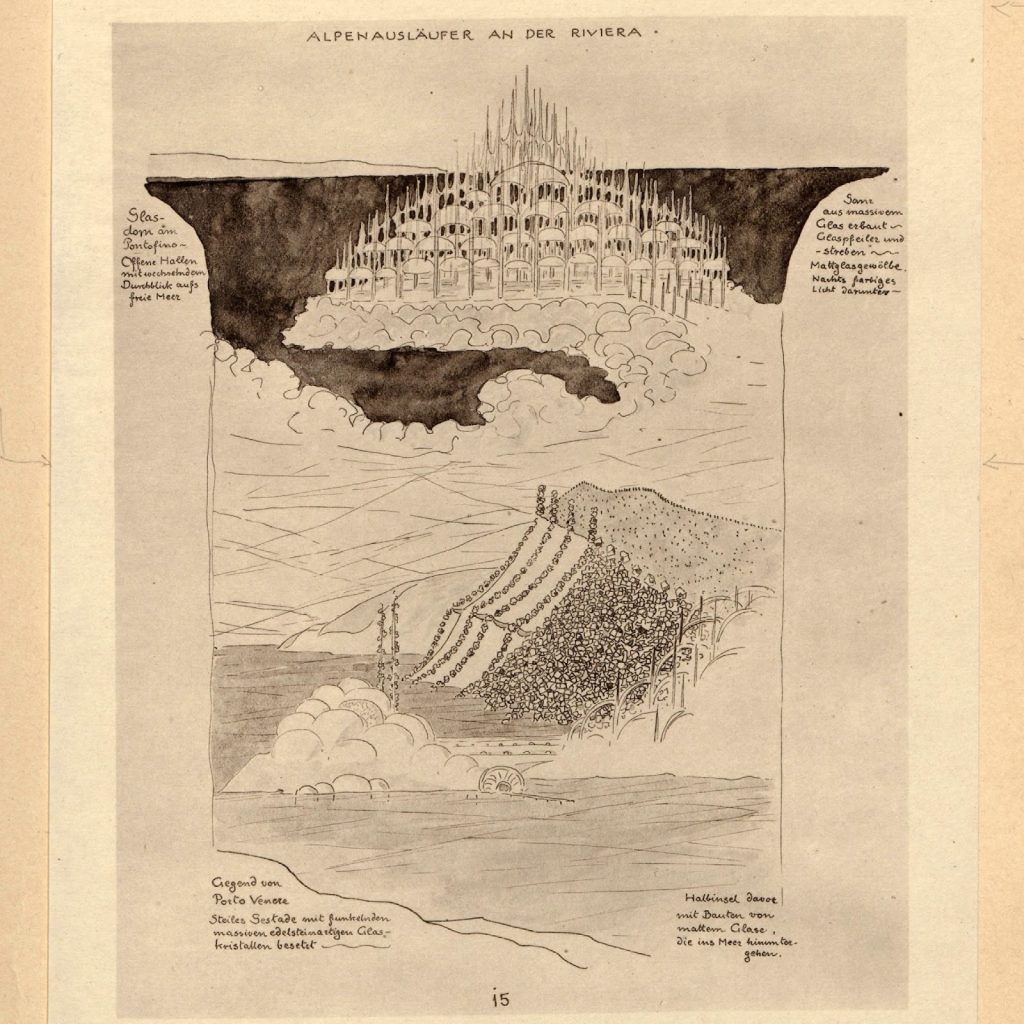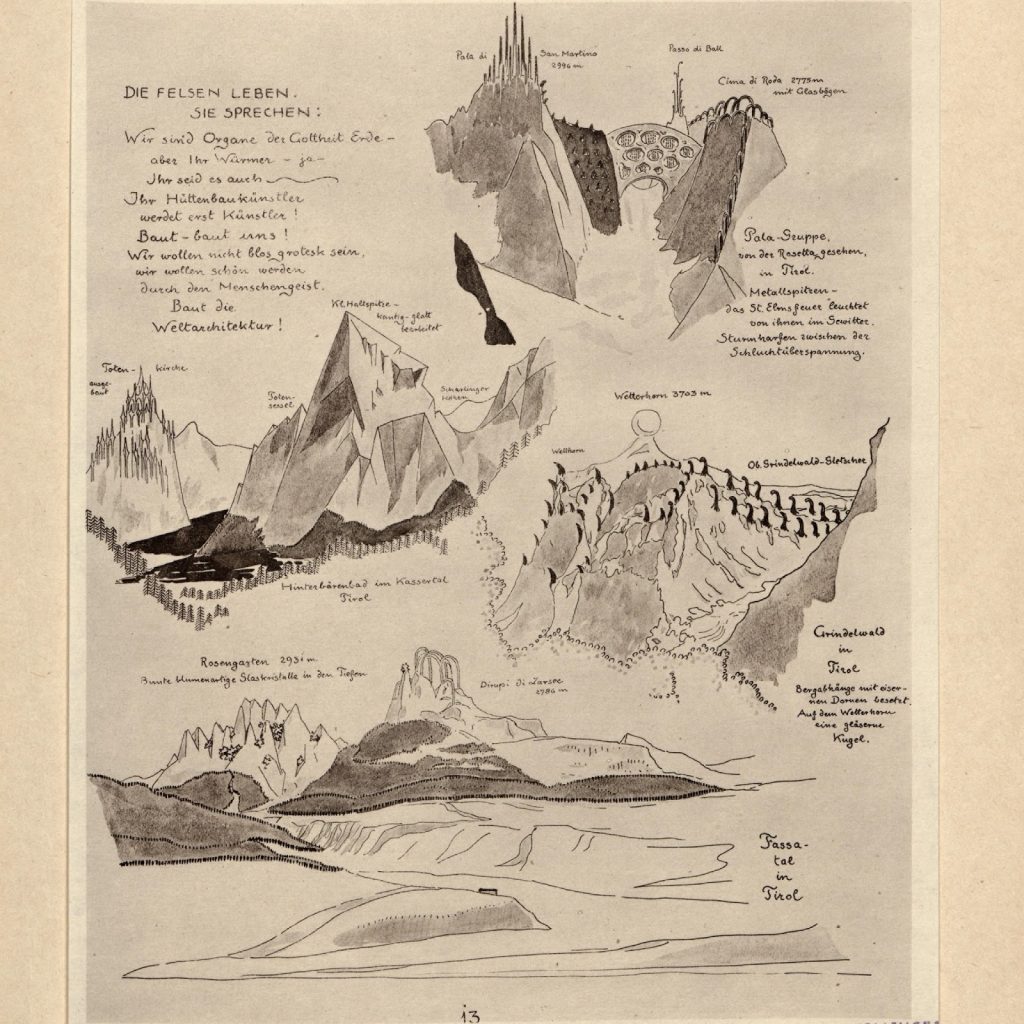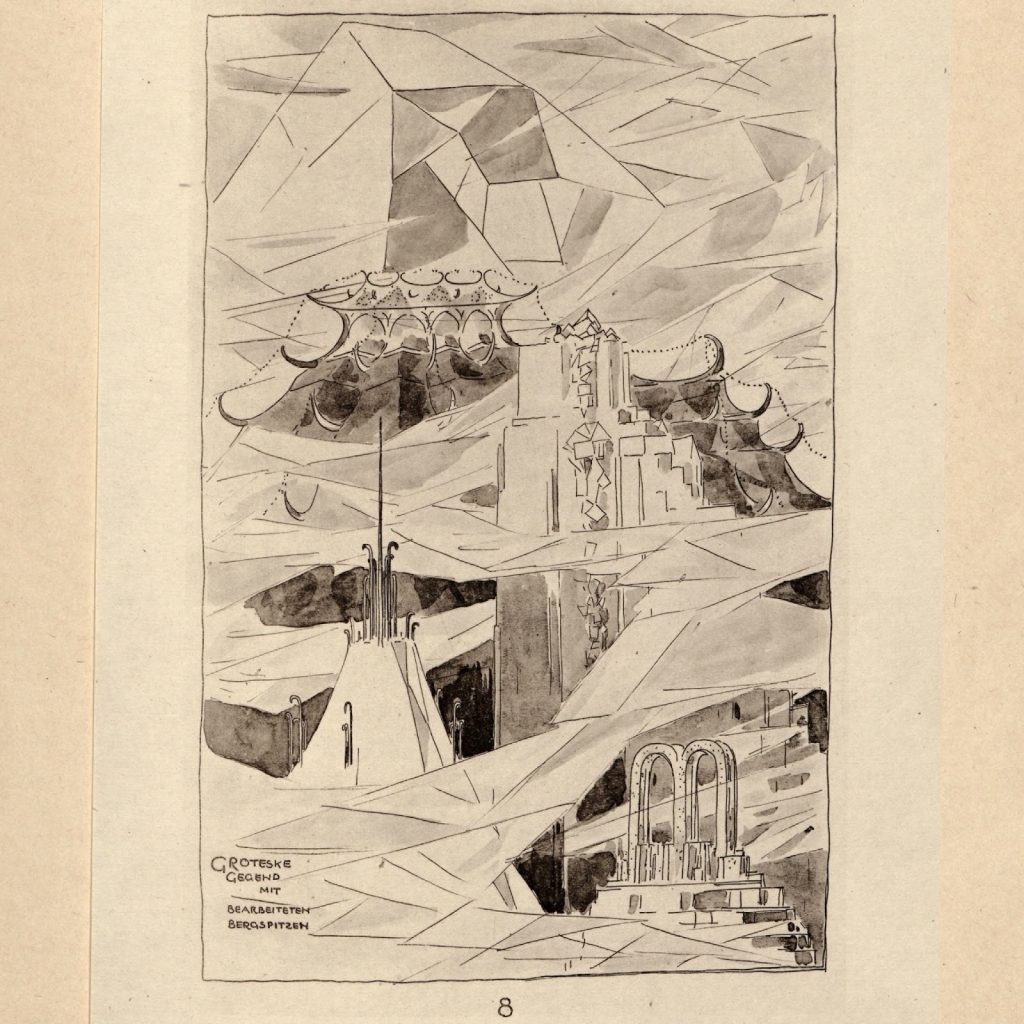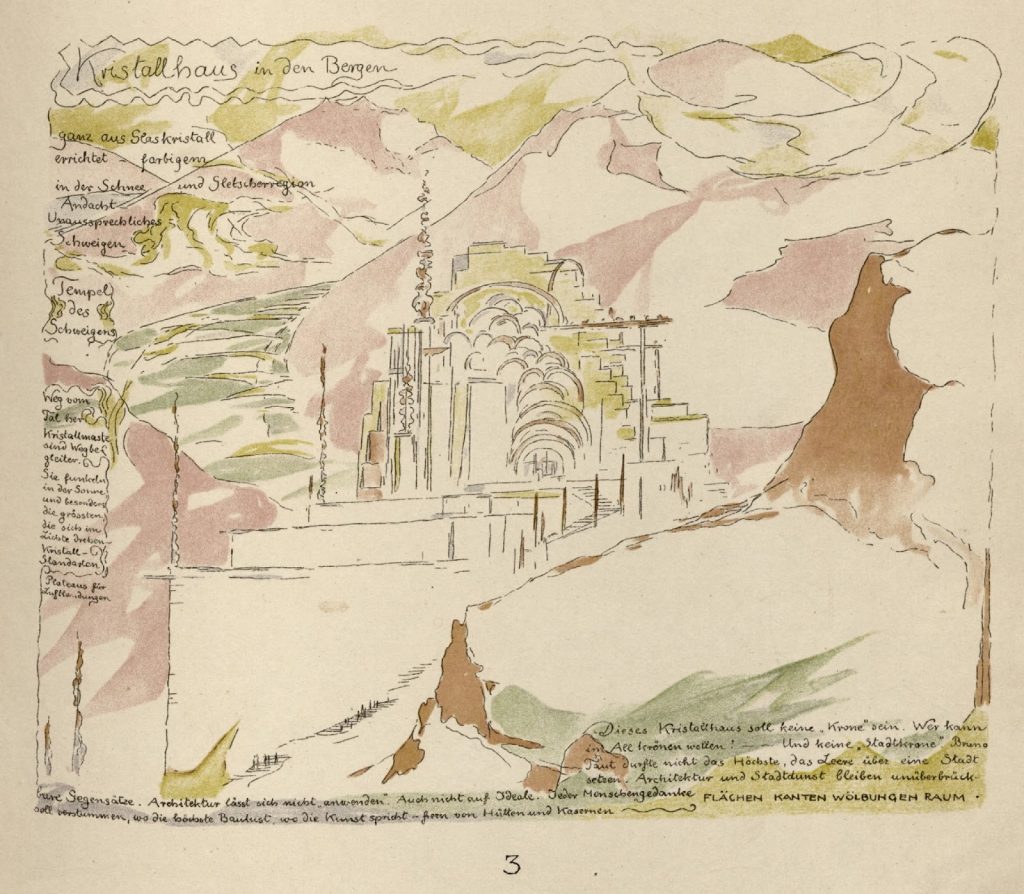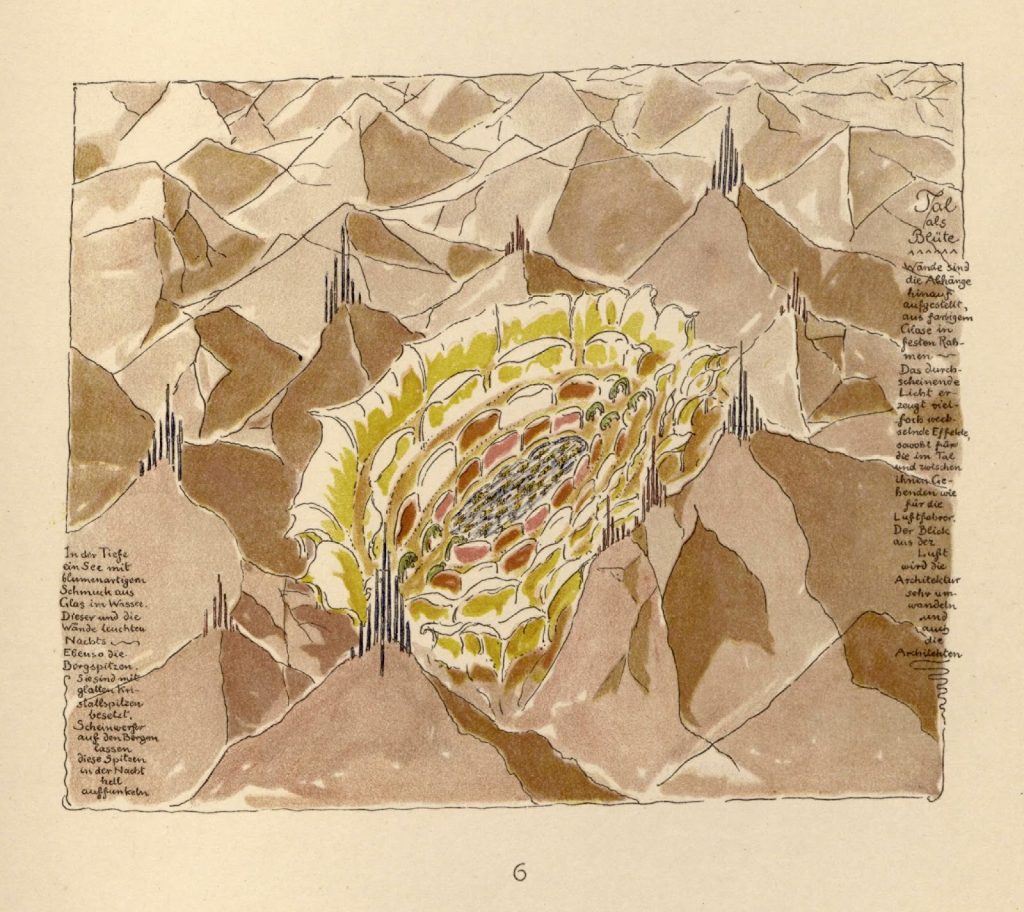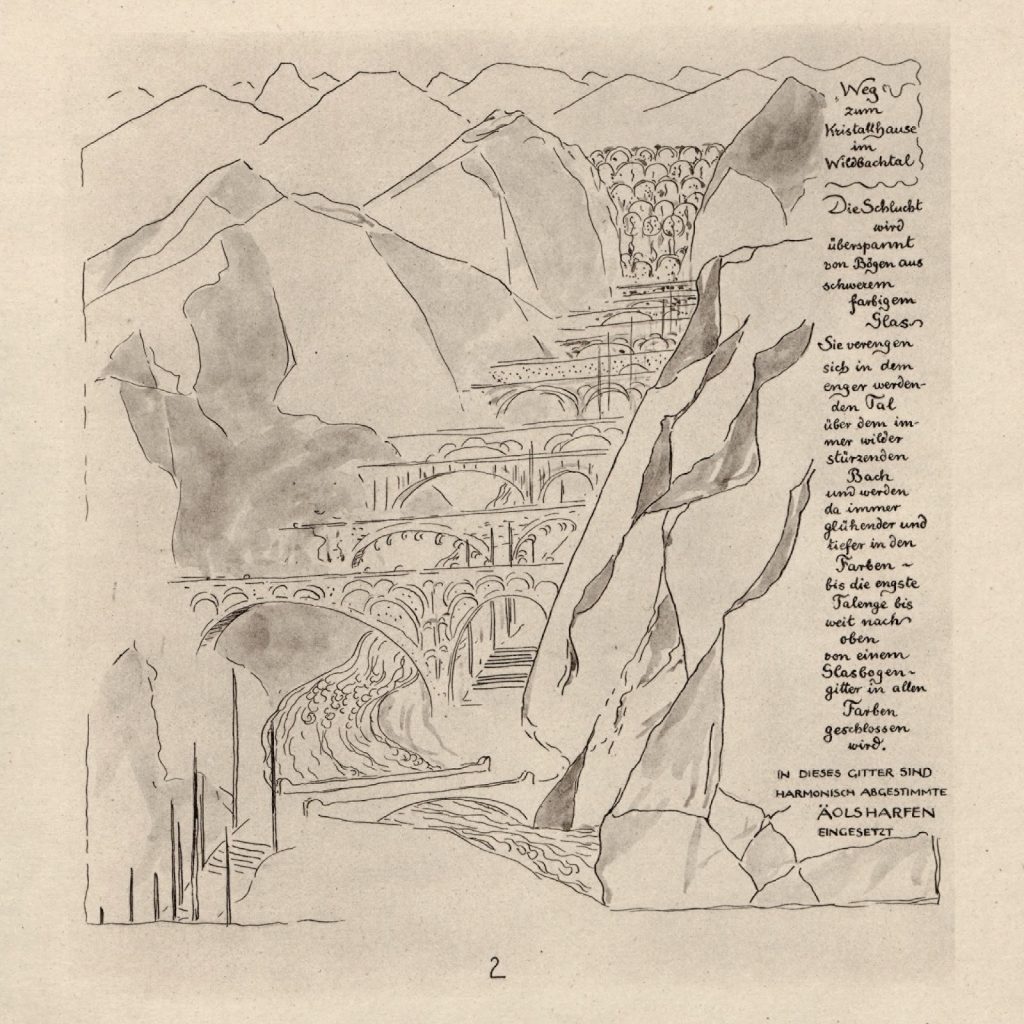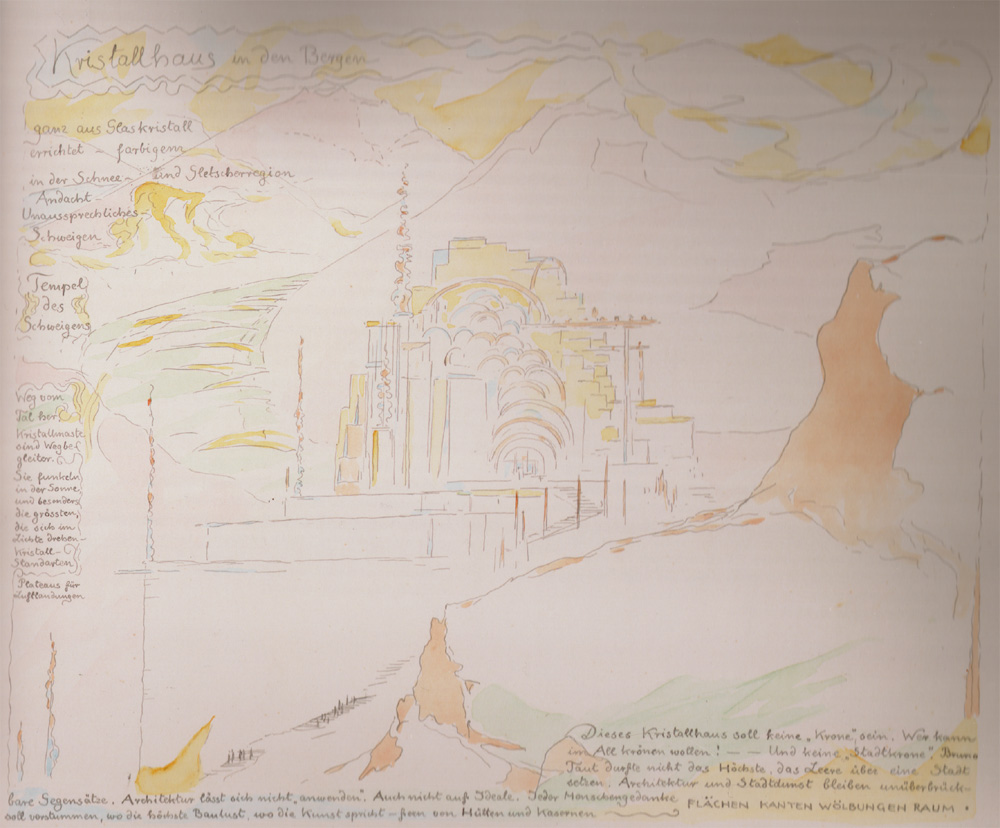”This proposal may seem adventurous and even pretentious, but at the risk of being chided as immodest and utopian, it must be made at least once. It should merely clarify in a concrete form the tendencies that encourage one to build high and should not be looked at as an end in itself, but rather as a suggestion that brings us closer to the realization of what was identified previously and to the fulfillment of further aims…
The ultimate is always quiet and empty… The cathedral was the container of all the souls that prayed in this way; and it always remains empty and pure – it is ‘‘dead.’’ The ultimate task of architecture is to be quiet and absolutely turned away from all daily rituals for all time…”
Bruno Taut – Die Statdkrone (The City Crown), 1919.

The First World War (1914-1918) had a strong effect on Bruno Taut and his later architecture because he became in a pacifist. The ideas that he had created in the Crystal Pavilion of 1914 would be framed in a deeper context and they became in the starting point of the architecture during the next years. Taut claimed that architecture had to find an alternative to the war ideology of that time, and it had to be connected with mysticism, as he used to say: ”without religion there is no true culture, no art”. This statement was framed within the concept Geist and Volk (Spirit and people), where the Geist (spirit) was the vehicle through the personal aspirations of the man were close of the creations of the God.
La primera guerra mundial (1914-1918) tuvo un importante efecto en Bruno Taut y su arquitectura posterior, convirtiéndole en un pacifista convencido. Las ideas que había plasmado en el Pabellón de Cristal de 1914, se enmarcarían en un contexto mucho más profundo que sería el punto de partida del arquitecto para los próximos años. Taut reivindicaba que la arquitectura tenía que encontrar una alternativa al ideario bélico del momento basado en un mayor contacto con el misticismo; como solía decir: ”sin religión no hay cultura verdadera ni arte”. Esta declaración se enmarcaba en el concepto Geist and Volk (Espíritu y pueblo), donde el propio Geist (espíritu) era el vehículo a través del cual las aspiraciones personales del hombre se acercaban a la creación de dios.
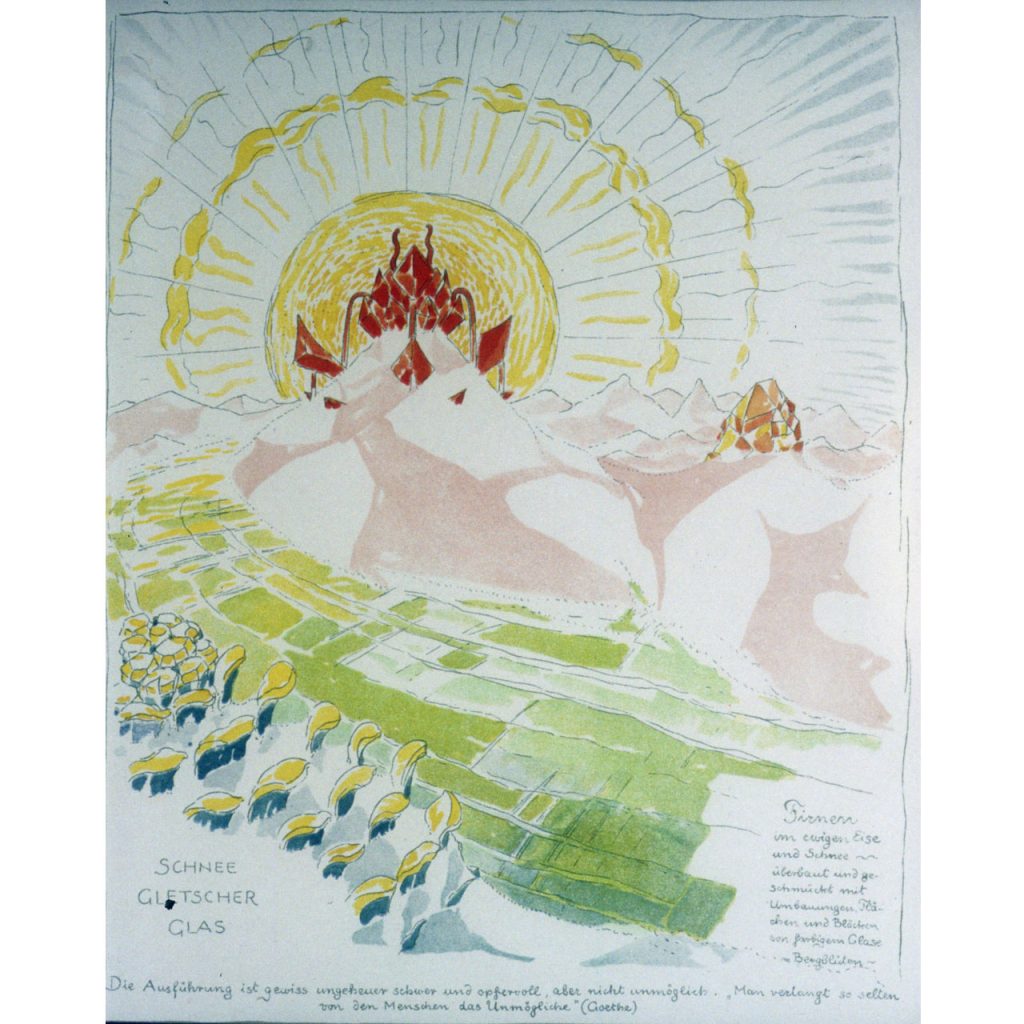
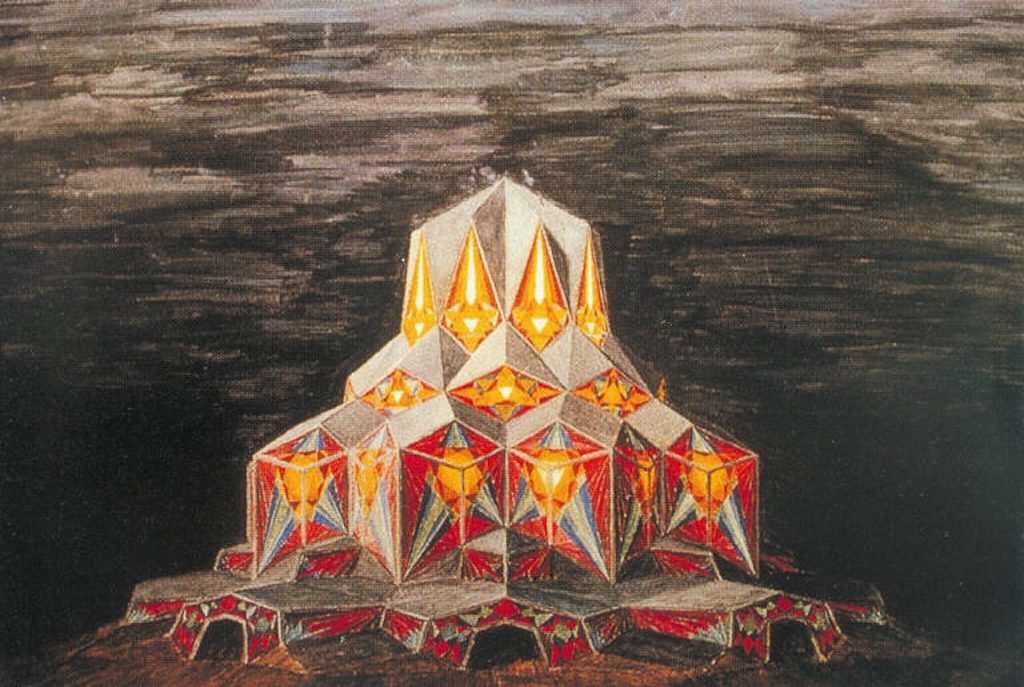
In 1919, Bruno Taut published his book-manifesto ‘The City Crown’ where , from a rational approach, he established the basis of a new communal center: a secular space between the gothic cathedral and the Asian temple. In these temples, the latest aim of architecture (its function) is devotion for beauty and a place for the spirit. Bruno Taut attempts to a futurist utopian, where technology has to help to the Geist.
En 1919 publica su libro-manifiesto ‘The City Crown’ (La Corona de la ciudad) donde, desde una aproximación racional, establece las bases de un nuevo centro comunitario: un espacio laico a medio camino entre el templo asiático y la catedral gótica, donde el objetivo último de la arquitectura (su función) es la devoción por la belleza y un lugar para el alma. Bruno Taut enfoca sus aspiraciones a una utopía futurista, donde la tecnología tiene que servir al Geist.
Shortly after publishing this book, Bruno Taut showed his new work ‘Alpine Architektur’ where he designed his secular temples in a very creative sequence of drawings. Glass and steel are seen in Alpine Architecture as elements that break away from the materialism of the period. One of the main targets of Taut was to get over the limitations of the materialism as part of his activism against rationalism. Glass was a synonym of the primitive purity and the paradigm of the innocence, an interior dream world that, instead of facing the ideological and social problems of the period, he enclosed in a crystal bubble.
Al poco de publicar este libro, Bruno Taut presenta su trabajo ‘Alpine Architektur’ donde da rienda suelta a su imaginación a la hora de crear tales templos laicos. En este trabajo, el vidrio y el acero as vistos como elementos que trazan una ruptura con el materialismo de la época. Para Taut, uno de sus principales objetivos era superar las limitaciones del materialismo como parte de su activismo frente al racionalismo. El vidrio es sinónimo de una pureza primitiva y el paradigma de la inocencia, un mundo interior onírico que en lugar de afrontar los problemas sociales e ideológicos y sociales de la época se aislaba de ellos, encerrándose en burbujas de cristal.
Further Readings:
- Die Stratdktrone (The City Crown) – Bruno Taut. 1919
- Alpine Architecture – Bruno Taut. 1920
- Crystal Chain Letters: Architectural Fantasies by Bruno Taut and His Circle – Iain Boyd Whyte. 1985
- Bruno Taut and the Architecture of Activism – Iain Boyd Whyte. 2010

